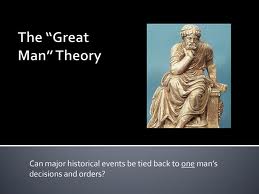
Purposive sampling (also known as judgment, selective or subjective sampling) is a sampling technique in which researcher relies on his or her own judgment when choosing members of population to participate in the study. Purposive sampling is a non-probability sampling method and it occurs when “elements selected for the sample are chosen by the judgment of the researcher. Researchers often believe that they can obtain a representative sample by using a sound judgment, which will result in saving time and money”.[1] TV reporters stopping certain individuals on the street in order to ask their opinions about certain political changes constitutes the most popular example of this sampling method. However, it is important to specify that the TV reporter has to apply certain judgment when deciding who to stop on the street to ask questions; otherwise it would be the case of random sampling technique. Alternatively, purposive sampling method may prove to be effective when only limited numbers of people can serve as primary data sources due to the nature of research design and aims and objectives. For example, for a research analysing affects of personal tragedy such as family bereavement on performance of senior level managers the researcher may use his/her own judgment in order to choose senior level managers who could particulate in in-depth interviews. In purposive sampling personal judgment needs to be used to choose cases that help answer research questions or achieve research objectives. According to the type of cases, purposive sampling can be divided into the following six categories[1]: Typical case. Explains cases that are average and normal. Extreme or deviant case. Deriving samples from cases that are perceived as unusual or rare such as exploring the reasons for corporate failure by interviewing executives that have been fired by shareholders. Critical case sampling focuses on specific cases that…

Brown (2006) insists that two forms of literature need to be reviewed: conceptual literature and research literature. Conceptual literature is a type of publication that has been written by the respected authorities in the industry. It contains theories ideas and experiences and is often published in the forms of research articles and books. A wide range of conceptual literature has been reviewed for the dissertation. Most respected authorities in the field if personal finance in general, and in the field of personal loans in particular the works of whom have been used in the research include Modigliani, Butterworth, Debelle, DeVaney, Lytton, Durand and others. Research literature, on the other hand gives information about researches that have been conducted in the field of the research topic and usually is presented in the forms of papers and reports. A number of research literature have been used in the course of the literature review for the dissertation. References Brown RB, 2006, Doing Your Dissertation in Business and Management: The Reality of Research and Writing, Sage Publications
By John Dudovskiy
Category: Literature Review

Brown (2006) maintains that the evaluation of the literature review needs to be undertaken on the basis of the following five criteria: 1. Purpose of the publication. The purposes of all of the publications reviewed as a part of the literature review have been identified in comprehensively. 2. Scope of the research. Before using a source as a secondary data for the dissertation its scope has been identified by establishing in what depth a particular article covered the issues associated with personal debts. Accordingly, the articles that did not cover the research questions in sufficient depths have not been mentioned in this chapter of the dissertation. 3. The authority of the publication. The authority of the publications and the credentials of authors have been taken into account when an article relating to the research questions have been critically reviewed. Especially, the authority of the articles available from the internet has been scrutinized greatly in order to provide the validity of the secondary research findings. Specifically, the articles from the web-sites, such as Wikipedia.org with no known authors, have not been used in the literature review. 4. Audience of the publication. Also, to whom the article was intended to was taken into account when analysing articles in terms of their inclusion in the literature review. For example, the articles written by financial institutions intended for their potential customers have not been used in the literature review. 5. Format of the information. The way information was presented in the article has also played a role in their inclusion in the literature review of the dissertation. References Brown RB, 2006, Doing Your Dissertation in Business and Management: The Reality of Research and Writing, Sage Publications
By John Dudovskiy
Category: Literature Review

I. Introduction Activities undertaken by companies can be divided into two groups: its daily usual business operations and projects that are devised and implemented in order to achieve a specific objective, usually measures and activities that will assist in profit maximisation in short or/and long-term perspective. Nowadays project management is used by companies not only to achieve a specific objective like building a new facilities or introducing a new software, project management as also being used as an efficient tool to achieve strategic objectives of a company. This first part of the report analyses the reasons as why organizations are using project management in order to achieve their strategic objectives. It starts with the introduction of the problem and a brief analysis of the evolution of project management in order to study the background of the issue. Then the importance of project management in achieving strategic objectives is discussed together with the challenges likely to occur in linking project management and organizational objectives. II. The Evolution of Project Management The analysis of the evolution of project management gives us necessary knowledge and perspective required to assess the role of project management in achieving strategic objectives in a due manner. Project management started as a tactical method mainly used to facilitate the completion of individual projects and initiatives such as introducing new software, initiating a new program or creating a new system. The beginning and popularization of project management is widely linked to the major work of Drucker “The Practice of Management” (1954). According to Panico (2002), from the 1940’s through the 1980’s PM was mainly thought to be a practice used by people working in engineering, construction and military. The Development of modern project management can be divided into following four periods (Azzopardi, 2010): 1. The period before 1958 when…

Integrated Marketing Communications is described as “a concept of marketing communications planning that recognizes the added value of a comprehensive plan that evaluates the strategic roles of a variety of communication disciplines and combines these disciplines to provide clarity, consistency and maximum communications impact” (Belch and Belch, p.22 ). Integrated Marketing Communication in explained by Lee (1996, p.34) as ‘a new way of looking at the whole, where once we saw only parts such as advertising, public relations, sales promotion, purchasing, employee communication, and so forth, to look at it the way the consumer sees it – as a flow of information from indistinguishable sources’ Iacobucci and Calder (2003, p. ) specify the difference of integrated marketing from the traditional marketing by the fact that the main focus of the integrated marketing is on on-to-one marketing, relationship marketing or database marketing. This idea is supported by Schultz et al (1993, p.) who claim the main attention of integrated marketing to be on communication. The benefits of the Integrated Marketing Communications is listed in MMC Learning (online, 2010) as the following: • Integrated Marketing Communications initiates and maintains communication with customers. This leads to the increased level of customer satisfaction and the consolidation of image for the company; • The level of customer loyalty can be increased significantly through the use of Integrated Marketing Communications due to the strong bond between customers and the company it creates. • Increased level of profitability can be resulted by the use of the Integrated Marketing Communications due to the fact that the latter increases the overall efficiency of the company. • Messages sent to the customer through Integrated Marketing Communications are usually more consistent and this increases its credibility • Duplication of marketing and other efforts are eliminated in Integrated marketing Communications, therefore company…

Marketing communication is a crucially important component of any business practice. A company may produce high quality products or offer superior services at an attractive prices, however if an efficient marketing strategy is not in place, potential customers would not know about these products and services, therefore the business loses potential revenues. Moreover, in today’s highly competitive marketplace in any industry this way the business may go bankrupt as well. As it has been noted, “marketing communications is anything your organisation does that affects the behaviour or perception of your customers” (Callen, 2009, p.2). “Setting marketing communications objectives is important because: it acts as a means of assessing how best to build ongoing dialogues with audiences in order to maintain brand narrative and sustain competitive advantage; it provides a check in the use of marketing resources in the process of communicating; and it provides some arbitrary mechanism for evaluating the progress and cost of deploying these resources against budgets, previous campaigns and the competition” (Dahlen et al, 2009, p.93). According to Egan (2007) marketing communication objectives can be classified into three broad categories: Knowledge-based objectives. This form of marketing communication objectives aim to stimulate awareness and interest, as well as obtain attention. Feeling-based objectives. These categories of marketing objectives aim at creating positive associations and values with a brand and contribute to the development of the brand identity. Action-based objectives mainly concentrate on the volume of sales through building and maintaining strong customer relationships. Various factors will determine the combination of marketing communications strategies implemented and will also depend on other factors ranging from the type of industry to the actual target market. Ignoring these factors and simply executing strategies on a whim without careful analysis can lead to an unsuccessful launch or flood of problems on the international industry. It…

Heilbrunn (1994, p.65) divides scientific study of leadership into three phases: 1. 1900 – World War II. Researchers attempt to identify traits of leaders in order to study charisma. 2. World War II – 1970s. Main focus of leadership researches are behaviour of leaders. 3. 1970’s – present (date of publication). Interaction between leaders and followers are being studied. Focusing on the traits associated with great leaders, Frank (1993, p.382) informs that earliest studies of leadership had theoretical underpinning which stated that leaders are born, not bred and this research prevailed throughout the first half of the 20th century. Woods (2005, p.1103) informs that early approaches to the topic of leadership highlighted personality traits of key people as critical, which serves as a basis for The Great Man Theory. The Theory advocates the notion of ‘born leaders’, insisting that great leaders possess special skills, intelligence, trait and characteristics, which allow them to take competent decisions and lead the rest of the crowd, whatever a situation or environment might be. However, Adair (2007) informs that “Great Man Theory” has been found invalid in 21st century as nowadays, the majority of business researchers and practitioners believe that anyone can learn leadership skills and abilities with the presence of sufficient level of motivation. Parks (2005, p.4) informs that traditional understandings of leadership up to now have focused on personality characteristics, situation analysis and transaction of power and influence, but brands the notion of born leaders as inadequate, claiming that, at present, growing consensus among leadership theorists justify her stand. Various authors have offered their opinions regarding the fundamental essence of leadership. For instance, it has been stated that “fundamental core of global leadership consists of self-awareness, engagement in personal transformation, and inquisitiveness” (Mendenhall, 2008, p.54) References Adair, J, 2007, Effective Leadership Development, Chartered…

Samsung Electronics is based in Seoul, South Korea and operates in 65 countries worldwide with 157,000 people working for the company. Samsung Electronics products include semiconductors, hard drives, digital displays, home electronics, mobile phones, and others. All Samsung products have the same tone when the device is turned on, so that customers can easily get used to them and this tone is mentioned when Samsung products are being advertised as well. The business strategy of Samsung Electronics presents an interesting case due to the fact that the company has an experience of pursuing both, cost leadership as well as product differentiation strategies during its lifetime. Specifically, Mitchell (2010) informs that business strategy of the company was mainly cost efficiency prior to Asian Financial Crisis of 1997, as a result of which the company came on the verge of bankruptcy, and the situation was changed with Eric Kim becoming chief marketing officer of the company, who brought dramatic changes to the strategy of the company pursuing product differentiation strategy. “Smarter Life” theme was introduced recently in Samsung that is based on the innovative approach in improving the company’s current products, and introducing new products to the market. For instance, Android-based Samsung Galaxy Player 50 is to be introduced soon, containing a range of innovative features the product is expected to change the current media players’ market condition significantly. As a part of the massive initiatives aimed at pursuing product differentiation strategy efficiently Samsung design staff has been tripled to 400 globally (Singhania, 2006), along with numerous other measures. Dramatic change in the strategy of the company has allowed Samsung Electronics to emerge as one of the main players in all of the markets the company operates in. For instance, Galaxy Tab produced by Samsung is currently considered to be the only substantial…
Sony Corporation is an international electronics and media company with headquarters in Tokyo, Japan. Employing 167,900 people worldwide the company produces audio and video products, televisions, information and communications products, semiconductors and a wide range of other electronic components (Sony Corp, 2010). The main business strategy Sony pursues is product differentiation. “Sony has always distinguished itself from competitors by claiming to give better products worldwide…thus Sony is able to charge a premium price in its market” (Vashisht, 2005, p.99). The main parameters of product differentiation are specified by Vashisht as features, technological advancements, and quality. Accordingly, Sony enjoys a high level of customer loyalty among some people who use and appreciate advanced technology products and devices due to the fact that products offered by Sony always stand out because of their quality, extra features and design. Most of the Sony products are among the popular in their relevant markets, and sell for premium prices due to their numerous advantages. For instance, in game console market PlayStation launched in 1994 effectively competed with Nintendo 64 that used to be a market leader even though PlayStation was offered in considerably higher prices. PlayStation 2 and PlayStation 3 that followed in later years were equally successful for above reasons. Similarly, VIAO branded laptops and Bravia television sets were hugely successful in their respective computer and television markets despite being offered in much higer prices compared to most other brands. All these indicate to the fact that Sony Corporation is successfully undertaking its product differentiation strategy by offering high quality products for premium prices. References Sony Corporation, Hoover’s Profiles, Available at: http://www.hoovers.com/company/Sony_Corporation/crxxhi-1.html, Accessed January 3, 2011 Vashisht, K, 2005, A Practical Approach to Marketing Management,

Background study of the case (abstract) The formulation of a winning modern strategy and its effective implementation can result in success for profit oriented businesses, non-profit organizations and even political parties alike. The clear proof is the success of British labour party in general elections of 1997 after long years being out of power due to “old way thinking”, non-innovative approach and conflicts of interests within the party itself. All of these were changed once the future youngest prime minister since 1812 Tony Blair became the leader of the party in 1994. With the appointment of the young party leader many things changed within the party. One of the first things Tony Blair did as the party leader was to formulate a clear strategy and to adapt a business-like approach to lead the Labour party. He appointed competent, open-minded people in key positions, recognized and addressed the interests of all stakeholders and identified Labour party’s customer segments tasking into account unique interests of each segment group. All of these strategic decisions provided success for the Labour party. Introduction The present work aims to analyse the successful strategy which was adopted and implemented by Labour party under the leadership of Tony Blair with assistance from Tom Sawyer and other members of the team. Background of the case (abstract) provided at the beginning of the work to familiarize the reader with the topic of the case and to provide general background information in brief which was followed by introduction to the work. Analysis of the case is also undertaken in more detail to review key strategic decisions made by Labour party leaders, motives behind them, barriers for their implementations and outcomes after implementing those decision. This is followed by critical view and answer to questions based on the model.. Explanation is…
